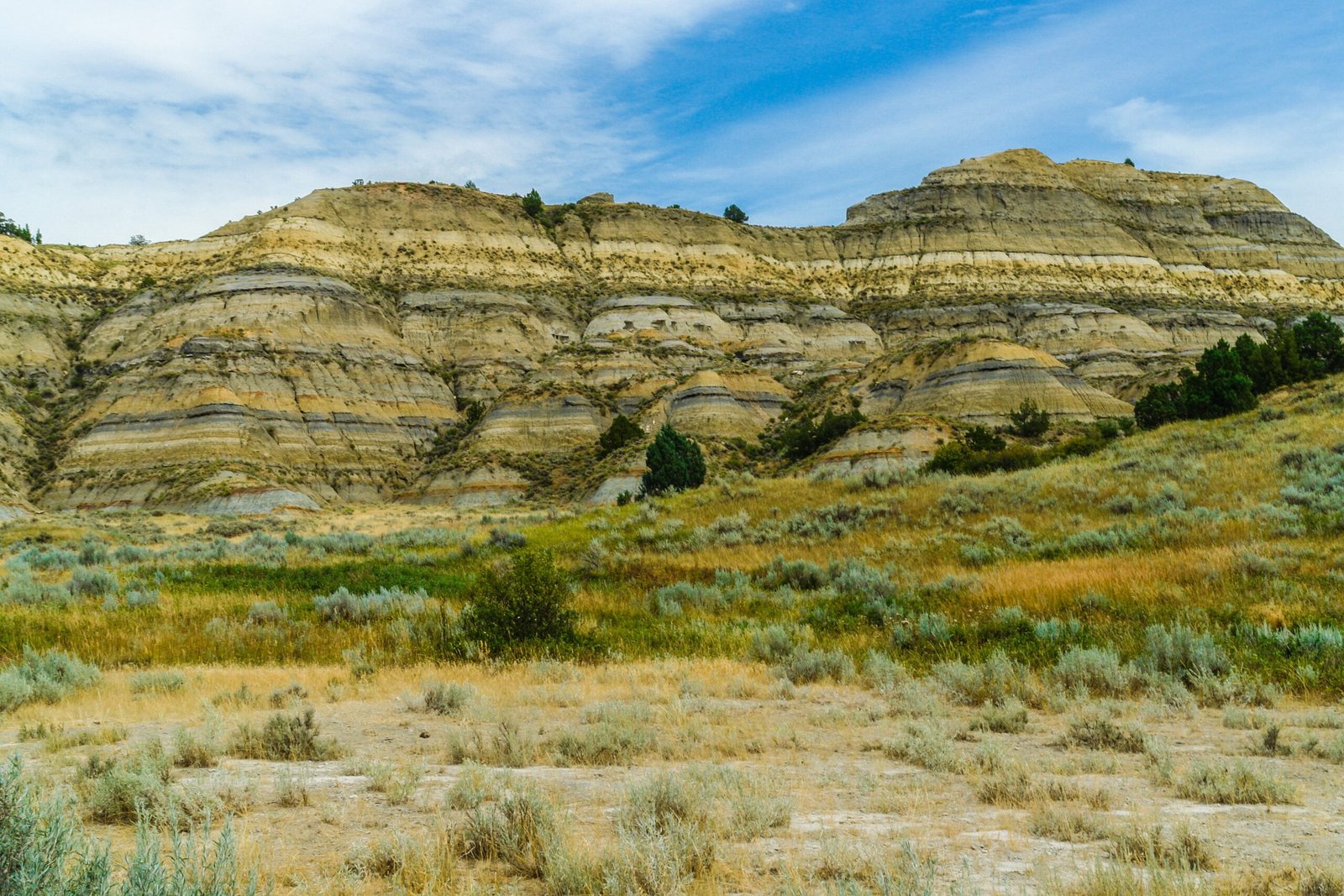North Dakota National Parks
North Dakota, a hidden gem nestled in the Upper Midwest region of the United States, is a land of sweeping beauty, scenic landscapes, and untamed wilderness. With its vast prairies, rolling hills, and rugged badlands, this captivating state invites you to discover its diverse natural wonders, rich history, and enchanting outdoor adventures. Located on the northern border of the United States, North Dakota is a part of the Great Plains and shares its northern boundary with Canada. As the 19th largest state by area, it offers an expansive canvas for exploration and enjoyment, with a unique blend of physical and cultural geography.
The state’s terrain is defined by the great Missouri River, which winds through North Dakota and creates stunning river valleys, fertile farmlands, and picturesque badlands, making it a haven for nature lovers and outdoor enthusiasts. The western part of the state is home to the iconic Theodore Roosevelt National Park, a testament to the region’s rich and diverse ecosystem, while the eastern part showcases the majestic Sheyenne River Valley and the serene beauty of the Lake Sakakawea State Park.
North Dakota’s natural treasures are not confined to its landscapes alone. This distinctive state is also a vibrant tapestry of Native American, Scandinavian, and German-Russian heritage, making it a truly enriching and cultural destination. The famous Scandinavian Heritage Park and the Knife River Indian Villages National Historic Site are just a few examples of the state’s deep-rooted cultural legacy.
In this post, we will delve into the many facets of North Dakota’s national parks, highlighting their unique offerings to visitors and providing you with a comprehensive, in-depth guide to exploring these breathtaking locales. From the geological wonders of the badlands to the panoramic vistas of the prairie grasslands, North Dakota’s national parks are an invitation to immerse yourself in the awe-inspiring beauty of the natural world and connect with the indelible spirit of the American frontier.
List of National Parks in North Dakota
Theodore Roosevelt National Park
Theodore Roosevelt National Park, located in western North Dakota, is a remarkable tribute to the 26th President of the United States and his passion for conservation. The park is divided into three distinct units: the South Unit, the North Unit, and the Elkhorn Ranch Unit, which together protect over 70,000 acres of rugged badlands, prairies, and rolling hills. The park is home to diverse flora and fauna, including bison, prairie dogs, elk, and wild horses.
Visitors to the park can explore a variety of hiking trails, ranging from easy walks to challenging backcountry treks. The park’s scenic drives, including the South Unit’s 36-mile loop and the North Unit’s 14-mile out-and-back road, offer incredible vistas and opportunities to spot wildlife. The South Unit’s Painted Canyon Visitor Center provides exhibits and an overlook with sweeping views of the badlands. The North Unit’s Caprock Coulee Trail offers a unique hiking experience through badlands formations and mixed-grass prairie ecosystems.
History buffs will appreciate the park’s connection to Theodore Roosevelt, who operated two ranches in the area in the 1880s. Visitors can explore the log cabin at the Maltese Cross Ranch, which was once home to Roosevelt, and the site of his second ranch, the Elkhorn Ranch Unit, which is recognized as the “cradle of American conservation.”
Knife River Indian Villages National Historic Site
Located in central North Dakota, the Knife River Indian Villages National Historic Site protects and interprets the history and culture of the Hidatsa, Mandan, and Arikara tribes who once inhabited the area. The site spans over 1,700 acres along the Knife River, a tributary of the Missouri River, and includes the remains of three historic Native American villages.
Visitors to the park can explore the earthlodge-style dwellings, which have been reconstructed based on archaeological evidence, and gain insight into the daily lives of the indigenous people. The park also offers a visitor center with exhibits on the history, culture, and traditions of the tribes, as well as a theater showcasing a film about the site’s significance.
A highlight of the park is the 1.5-mile Village Trail, which takes visitors through the remains of the Awatixa Xi’e Village and the Big Hidatsa Village. The trail provides interpretive signs and opportunities for birdwatching and wildlife viewing, making it a rewarding experience for nature enthusiasts and history buffs alike. Additionally, the park hosts a variety of special events and programs throughout the year, including cultural demonstrations and ranger-led talks.





